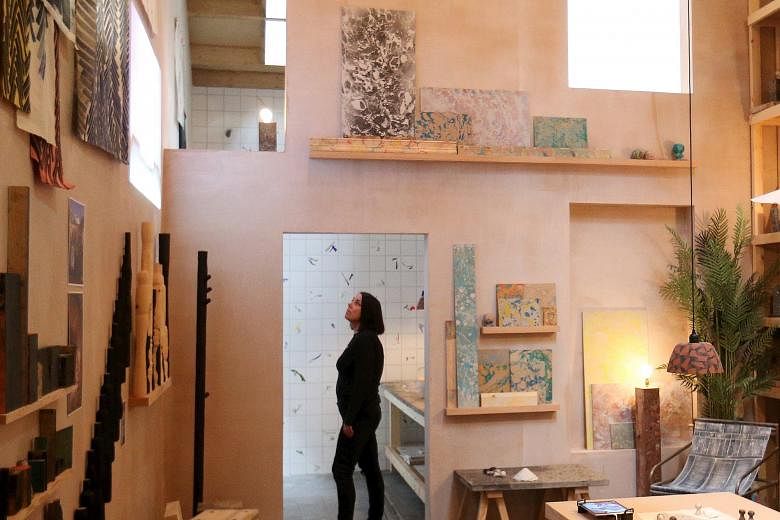GLASGOW • An architectural and design collective that helped to renovate a run-down area of Liverpool to try to stem a tide of gentrification won Britain's Turner Prize for contemporary art on Monday.
Joseph Halligan, 27, one of 18 members of Assemble, said he hoped the publicity for the prize would draw people worldwide to buy products from a workshop selling replicas of housing fixtures to help support the project.
"I think the idea that art is something that can only be created by someone that declares themselves an artist is maybe not the best thing," the Birmingham native, who trained as an architect, told Reuters. "I believe that anyone can create art and art should be for everyone and anyone can be an artist."
The Turner Prize, established in 1984 and run in partnership with the Tate museums, comes with £25,000 (S$53,010) in cash.
In the past, it has gone mostly to visual and conceptual artists such as Antony Gormley, Anish Kapoor and Damien Hirst.
Many houses in the Liverpool neighbourhood had suffered severe damage in 1981 riots and been earmarked for demolition until residents banded together, sold produce to support renewal efforts and invited London-based Assemble to help out.
The collective has blurred traditional boundaries between art and design with its redevelopment plans for 10 Victorian houses in the run-down Toxteth district of Liverpool, north-west England.
"The jury has awarded the prize to Assemble, who work in tandem with communities to realise a ground-up approach to regeneration, city planning and development in opposition to corporate gentrification," the jury said in Glasgow. It was the first time the event had been held in Scotland.
"They draw on long traditions of artistic and collective initiatives that experiment in art, design and architecture," the jury said, citing the collective's project of renewing the Granby Four Streets neighbourhood.
Assemble says its work aims "to address the disconnection between the public and the process by which places are made".
They not only undertake housing renovation with low-cost materials, but also create a means to sustain the redevelopment by manufacturing and selling objects based on the designs found in social housing, including everything from fireplaces to tiles to ceramic door handles.
They have published an online catalogue of its offerings at granby workshop.co.uk and says the proceeds "will support a programme engaging young people aged 13 to 18 in creative, practical projects".
Other finalists included London- based German artist Nicole Wermers, with her room of modern chairs with fur coats sewn onto them, and a supernatural study centre by British artist Bonnie Camplin. Her work consists of a room containing five televisions with headphones, where visitors can listen to people explaining supernatural events they claim to have experienced.
The fourth finalist featured the enigmatic work of Canadian artist Janice Kerbel. The musical composition, Doug, is performed by six opera singers dressed in black, who sing songs recounting a series of disasters that happened to a person named Doug.
REUTERS, AGENCE FRANCE-PRESSE

